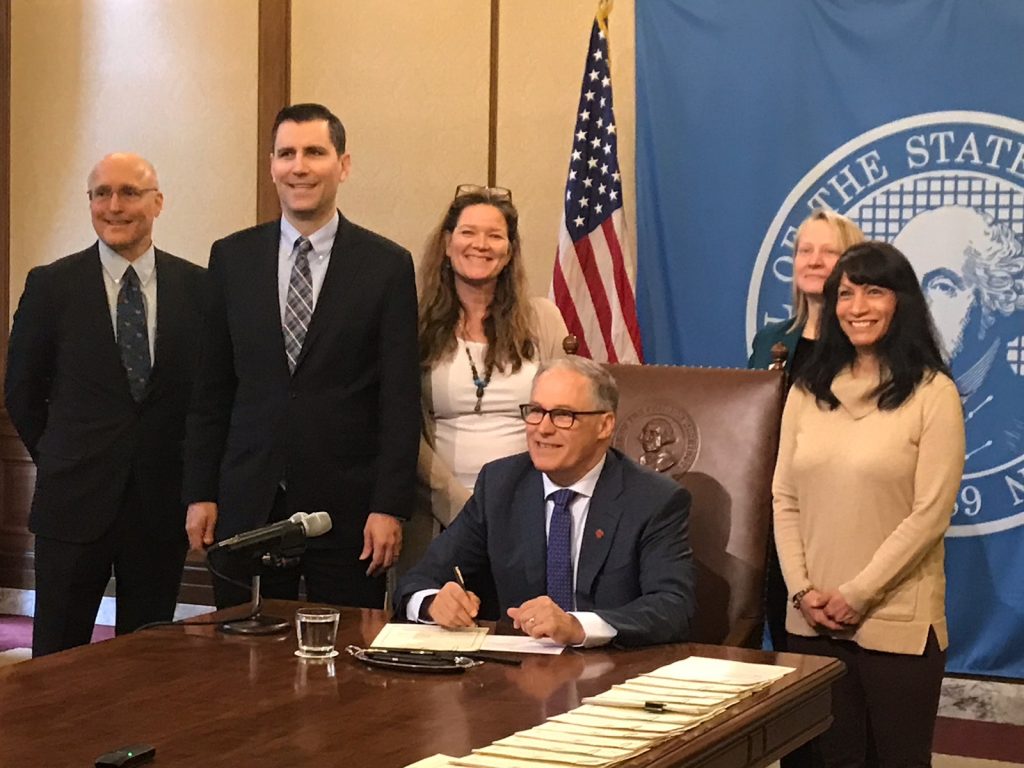
The Washington State Legislature approved updated regulations on car-seat and booster seat use. The updated law will go into effect statewide in 2020.

Under the revised law:
· Children under age 2 must use rear-facing car seats. Children should remain in a rear-facing car safety seat as long as possible, until they reach the highest weight or height allowed by their seat.
· Children ages 2 to at least 4 years should use age-appropriate child harness seat. Once they are facing forward, children should use a forward-facing car safety seat with a harness for as long as possible, until they reach the height and weight limits for their seats. Many seats can accommodate children up to 65 pounds or more.
· Children older than 4 but shorter than 4’9” who have outgrown the child harness seat must use booster seats. Practically speaking, most kids will need a booster seat until 10-12 years of age.
· When children are old enough and large enough to use the vehicle seat belt alone, they should always use lap and shoulder seat belts for optimal protection.
As with the previous law, drivers can be ticketed if a passenger under age 16 is not using the correct car seat, booster seat, or seat belt based on their age, height or weight.
“These changes will help parents protect their children on the road,” said Dr. Beth Ebel, a professor of pediatrics at the University of Washington School of Medicine and member of the Washington State American Academy of Pediatrics. “This change brings us in line with current best thinking about keeping kids safe.” The changes align state law with the most recent guidance from the American Academy of Pediatrics, issued in 2011.
Dr. Ebel, who studies transportation safety at the Harborview Injury Prevention and Research Center and takes care of injured children at Harborview Medical Center, has testified in support of the updated law for three years.
“Harborview is the only Level 1 regional trauma center for children who have life-threatening injuries in a car crash. Catastrophic injuries we’ve seen to children’s brains, organs and nervous systems might have been preventable had the child been buckled in the correct car seat.”
In head-on crashes, there are significantly fewer serious injuries and fatalities when young children are in rear-facing seats, which better protect their still-developing heads and necks. Among older children 4 up to 10- 12 years of age, kids need a booster seat. Poorly fitted seatbelts are associated with injuries to the spine, intestines, head and neck. Ebel said she regularly sees kids 8-12 years of age “with completely preventable injuries, even at relatively slow speeds like 30 miles per hour.” Such injuries can be prevented by the proper booster seat, which correctly positions the seat belt against the child until he or she is tall enough to use the seat belt alone.
“When I talk to parents about child safety, they say, ‘Why isn’t this the law?’” Ebel said. “Now that Washington law is updated to reflect new safety recommendations from the American Academy of Pediatrics, more families are going to follow these guidelines and more kids will come home safe. At the end of the day, that’s what’s important.”
More information on car seats and booster seats, including a directory of free seat checks in Washington state, is available at www.boosterseat.org.